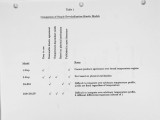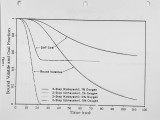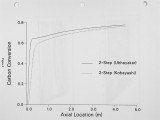| Title |
Sensitivity of Combustion Calculations to Devolatilization Rate Expressions |
| Creator |
Fletcher, Thomas H. |
| Publisher |
University of Utah |
| Date |
1985 |
| Spatial Coverage |
presented at Livermore, California |
| Abstract |
The aim of this paper is to show the sensitivity of pulverized coal combustion calculations to available submodels of the devolatilization process. The wide variation in reported devolatilization rates for similar conditions is discussed, along with a comparison of the advantages and disadvantages of available devolatilization models. The need for particle temperature measurements during coal devolatilization is emphasized. Three devolatilization models are investigated: a two-competitive-step rate model, a distributed activation energy model (DAEM), and a straight chain distributed activation model (DISCHAIN). The devolatilization models are applied to pulverized coal simulations of both inert and oxidizing environments in both laminar and turbulent flows and compared with experimental observations. The comprehensive simulation codes used in this study can treat the following: mass transfer and chemical reactions in the boundary layer of a single particle, gas and particle histories in a laminar gas stream, and gas and particle histories in a two-dimensional coal combustor. The laminar flow simulations (assuming no volatiles combustion) are compared with visual observations of devolatilization behavior in a single particle, laminar flow reactor operating at 1% O2 , These simulations show that the agreement between predicted volatiles release and experimental observations is dependent upon the particular devolatilization kinetic model used. Simulations of the chemical reaction and mass transfer surrounding a single particle show that volatiles combustion in 1 % O2 does not significantly affect predicted devolatilization behavior, allowing the system to be treated as an inert gas environment. The two sets of kinetics coefficients for the 2-step model seem to span the range of the other models. The combustor simulations show that the the choice of devolatilization kinetics can affect the predicted flow pattern as well as the predicted carbon conversion, indicating the need for definitive devolatilization kinetic data at high temperatures and heating rates. |
| Type |
Text |
| Format |
application/pdf |
| Language |
eng |
| Rights |
This material may be protected by copyright. Permission required for use in any form. For further information please contact the American Flame Research Committee. |
| Conversion Specifications |
Original scanned with Canon EOS-1Ds Mark II, 16.7 megapixel digital camera and saved as 400 ppi uncompressed TIFF, 16 bit depth. |
| Scanning Technician |
Cliodhna Davis |
| ARK |
ark:/87278/s61j9db6 |
| Setname |
uu_afrc |
| ID |
1033 |
| Reference URL |
https://collections.lib.utah.edu/ark:/87278/s61j9db6 |

























